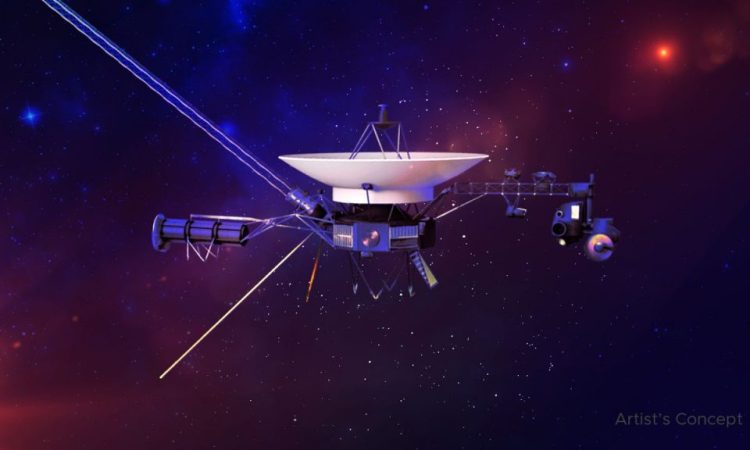Voyager 1, problem solved with thrusters 24 billion kilometers from Earth in interstellar space

Voyager 1 uses its thrusters to stay pointed at Earth, but after 47 years in space some of its fuel lines had become clogged.
Engineers working on the probe Voyager 1 NASA have solved a problem ai the probe’s thrusters, which it maintains so it can receive commands, send technical data and deliver the unique scientific data it is collecting. After 47 years, a fuel line inside the thrusters it became clogged with silicon dioxide, a byproduct that forms with age from a rubber diaphragm in the probe’s fuel tank. Clogging reduces the efficiency with which thrusters can generate force. After weeks of careful planning, the team modified the spacecraft with a different set of thrusters while carrying out a delicate operation from interstellar space.
Advertisement
The clogging of the thrusters
The thrusters are powered by liquid hydrazine, which is turned into gas and released in puffs tens of milliseconds long to gently tilt r toward Earth. If the clogged thruster were healthy, it would conduct about 40 of these short pulses per day.
Both Voyager probes are equipped with three sets, or branches, of thrusters: two sets of attitude propulsion and one set of trajectory correction maneuver. During the mission’s planetary flybys, both types of thrusters were used for different purposes. But because Voyager 1 travels on , its thruster needs are simpler, and both thruster branches can be used to point the space probe at Earth.
In 2002 the mission’s engineering team, based at NASA’s Jet Propulsion Laboratory in Southern California, noticed that some fuel lines in the attitude propulsion branch used for targeting were becoming clogged, so the team switched to the second branch. When that branch showed signs of obstruction in 2018, the team switched to trajectory-correcting maneuvering thrusters and has used that branch ever since.
Now those trajectory-correcting thruster tubes are even more clogged than the original branches were when the team replaced them in 2018. The ones sit inside the thrusters and direct fuel to the catalyst beds, where it’s turned into gas — which they are different from the fuel lines that send hydrazine to the thrusters. Where the tube’s opening was originally just 0.25 millimeters in diameter, clogging has reduced it to 0.035 mm – or about half the width of a human hair. As a result, the team had to return to one of the attitude thruster branches.
A question of heating
Switching to different thrusters would have been a relatively simple operation for the mission in 1980 or even 2002. But it introduced new challenges, mainly related to power supply and temperature. The mission shut down all nonessential onboard systems, including some heaters, on both space probes to conserve their gradually diminishing electrical power, generated by decaying plutonium.
While these steps worked to reduce power, they also led to a cooling of Voyager, an effect compounded by the loss of other non-essential heat-producing systems. As a result, the trim’s thruster branches cooled down, and turning them on in that state could damage them, rendering the thrusters inoperable. The team determined that the best option would be to warm up the thrusters before the switch, turning on what had been deemed non-essential heaters.
However, as with so many challenges the Voyager team has faced, this one presented a conundrum: The space probe’s power is so low that turning on non-essential heaters to provide the heaters with adequate electricity, and all that is currently in operation is considered essential.
Studying the problem, they ruled out turning off one of the scientific instruments still in operation for a limited period of time because there is a risk that the instrument will not become active again. After further study and planning, the engineering team determined that they could safely shut down one of the probe’s mains for an hour, freeing up enough energy to turn on the thruster heaters.
Operation successful
On August 27, after performing the operation. technicians confirmed that the necessary propulsion branch was back in action, helping . “All the decisions we will have to make in the future will require much more analysis and caution than before,” said Suzanne Dodd, Voyager project manager at the Jet Propulsion Laboratory, which manages Voyager for NASA.
Space probes are exploring the , the region outside the bubble of particles and magnetic fields created by the Sun, where no other space probe is likely to visit for a long time. The mission’s science team is working to keep the Voyagers operating as long as possible, so they can continue to reveal what the interstellar environment is like.
If you have come this far it is because you considered our article worthy of being read to the end. Passione Astronomia has always tried to build, through scientific dissemination, a community of more informed and aware people. It’s also why we decided to write a book dedicated to astronomy. It is written in a clear and simple way, precisely because for us disclosure must be accessible to everyone. You find it .
Source:

